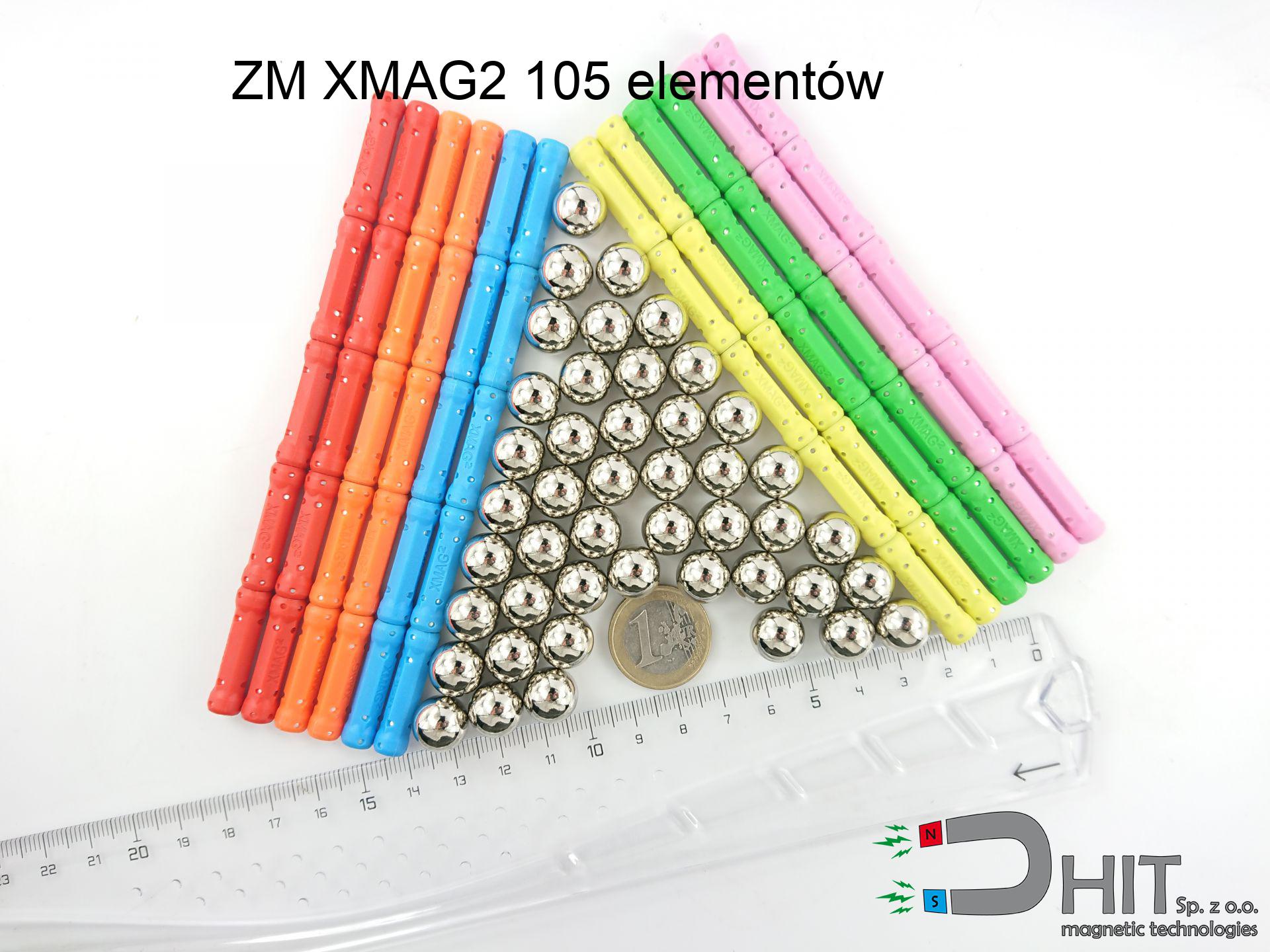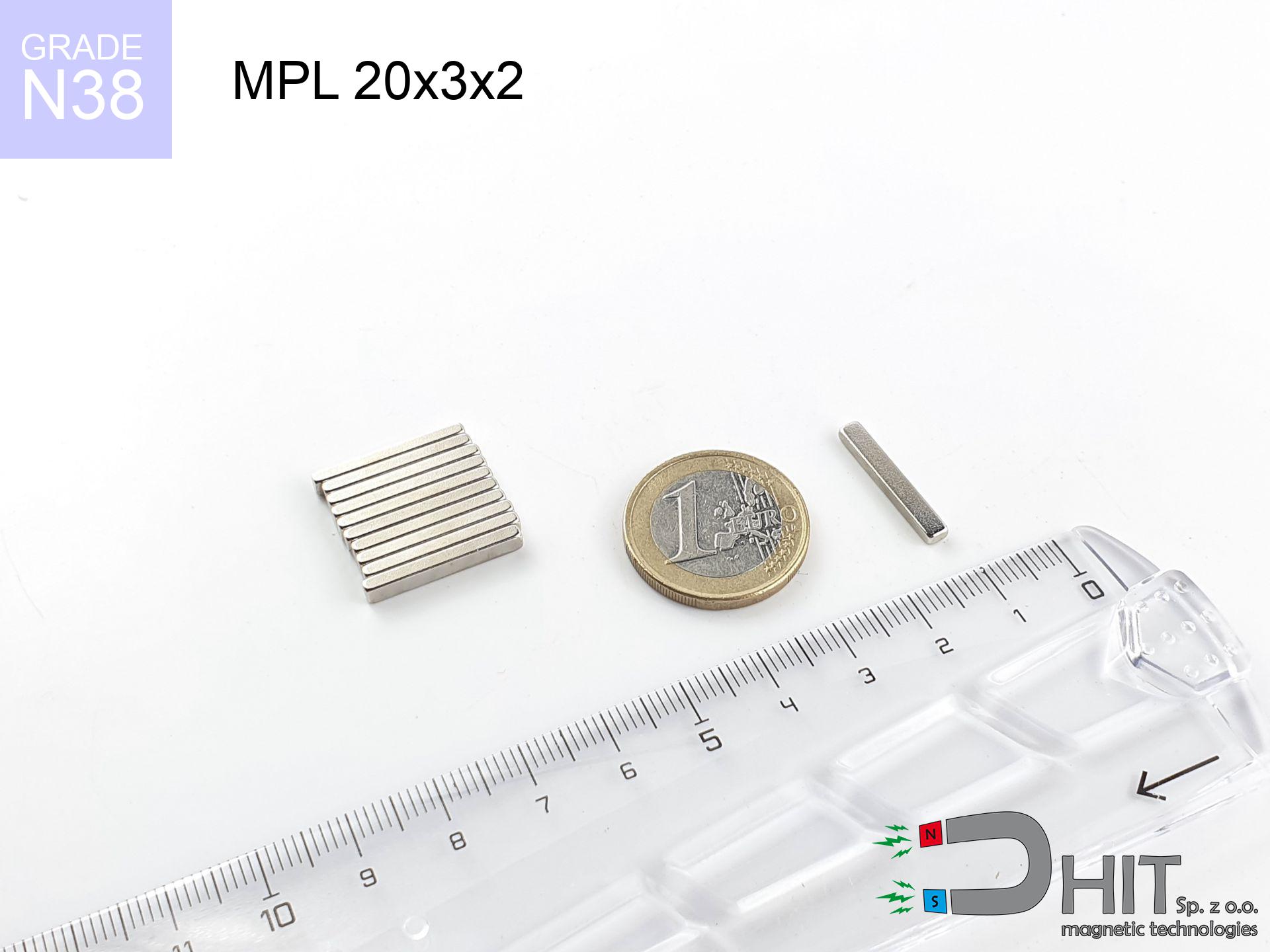ZM XMAG2 105 elementów - magnetic toy
magnetic toy
Catalog no 040211
GTIN: 5906301812371
Weight
569 g
49.20 ZŁ with VAT / pcs + price for transport
40.00 ZŁ net + 23% VAT / pcs
bulk discounts:
Need more?Not sure about your choice?
Give us a call
+48 888 99 98 98
otherwise drop us a message via
contact form
our website.
Specifications and form of a neodymium magnet can be calculated with our
magnetic calculator.
Same-day processing for orders placed before 14:00.
ZM XMAG2 105 elementów - magnetic toy
Magnetic properties of material
Physical properties of NdFeB
Shopping tips
Advantages as well as disadvantages of neodymium magnets NdFeB.
In addition to their magnetic efficiency, neodymium magnets provide the following advantages:
- They retain their magnetic properties for almost ten years – the loss is just ~1% (according to analyses),
- Their ability to resist magnetic interference from external fields is notable,
- Thanks to the glossy finish and gold coating, they have an visually attractive appearance,
- The outer field strength of the magnet shows advanced magnetic properties,
- Thanks to their exceptional temperature resistance, they can operate (depending on the form) even at temperatures up to 230°C or more,
- With the option for fine forming and personalized design, these magnets can be produced in numerous shapes and sizes, greatly improving design adaptation,
- Key role in new technology industries – they are used in hard drives, rotating machines, healthcare devices as well as other advanced devices,
- Compactness – despite their small size, they generate strong force, making them ideal for precision applications
Disadvantages of NdFeB magnets:
- They are prone to breaking when subjected to a heavy impact. If the magnets are exposed to shocks, it is suggested to place them in a steel housing. The steel housing, in the form of a holder, protects the magnet from breakage and additionally reinforces its overall robustness,
- High temperatures may significantly reduce the field efficiency of neodymium magnets. Typically, above 80°C, they experience permanent weakening in performance (depending on size). To prevent this, we offer heat-resistant magnets marked [AH], capable of working up to 230°C, which makes them perfect for high-temperature use,
- Due to corrosion risk in humid conditions, it is common to use sealed magnets made of synthetic coating for outdoor use,
- The use of a protective casing or external holder is recommended, since machining threads in neodymium magnets is risky,
- Potential hazard linked to microscopic shards may arise, if ingested accidentally, which is notable in the protection of children. It should also be noted that small elements from these devices may hinder health screening after being swallowed,
- Higher purchase price is one of the drawbacks compared to ceramic magnets, especially in budget-sensitive applications
Precautions
Neodymium magnetic are extremely fragile, leading to breaking.
Neodymium magnetic are fragile as well as will break if allowed to collide with each other, even from a distance of a few centimeters. Despite being made of metal as well as coated with a shiny nickel plating, they are not as hard as steel. In the case of a collision between two magnets, there can be a scattering of small sharp metal fragments in different directions. Protecting your eyes is essential.
You should keep neodymium magnets at a safe distance from the wallet, computer, and TV.
The strong magnetic field generated by neodymium magnets can damage magnetic media such as floppy disks, video tapes, HDDs, credit cards, magnetic ID cards, cassette tapes, etc. devices. They can also damage videos, televisions, CRT computer monitors. Do not forget to keep neodymium magnets away from these electronic devices.
Neodymium magnets are not recommended for people with pacemakers.
In the case of neodymium magnets, there is a strong magnetic field. As a result, it interferes with the operation of a heart pacemaker. However, if the magnetic field does not affect the device, it can damage its components or deactivate the device when it is in a magnetic field.
Keep neodymium magnets away from GPS and smartphones.
Magnetic fields interfere with compasses and magnetometers used in navigation for air and sea transport, as well as internal compasses of smartphones and GPS devices.
Dust and powder from neodymium magnets are flammable.
Avoid drilling or mechanical processing of neodymium magnets. If the magnet is crushed into fine powder or dust, it becomes highly flammable.
Neodymium magnets can demagnetize at high temperatures.
Even though magnets have been found to maintain their efficacy up to temperatures of 80°C or 175°F, it's essential to consider that this threshold may fluctuate depending on the magnet's type, configuration, and intended usage.
Do not give neodymium magnets to youngest children.
Not all neodymium magnets are toys, so do not let children play with them. In the case of small magnets, they can be swallowed and cause choking. In such cases, the only solution is to undergo surgery to remove the magnets, and otherwise, it can even lead to death.
Neodymium magnets are among the strongest magnets on Earth. The astonishing force they generate between each other can shock you.
Familiarize yourself with our information to correctly handle these magnets and avoid significant swellings to your body and prevent disruption to the magnets.
Magnets will attract to each other, so remember not to allow them to pinch together without control or place your fingers in their path.
If you have a finger between or on the path of attracting magnets, there may be a severe cut or a fracture.
If you have a nickel allergy, avoid contact with neodymium magnets.
Studies show a small percentage of people have allergies to certain metals, including nickel. An allergic reaction often manifests as skin redness and rash. If you have a nickel allergy, you can try wearing gloves or simply avoid direct contact with nickel-plated neodymium magnets.
Safety rules!
To raise awareness of why neodymium magnets are so dangerous, see the article titled How very dangerous are very powerful neodymium magnets?.




![UMP 67x28 [M8+M10] GW F120 Lina / N38 - search holder UMP 67x28 [M8+M10] GW F120 Lina / N38 - search holder](https://cdn3.dhit.pl/graphics/products/ump-67x28-m8+m10-gw-f-120+-lina-xiw.jpg)
![SM 25x200 [2xM8] / N52 - magnetic separator SM 25x200 [2xM8] / N52 - magnetic separator](https://cdn3.dhit.pl/graphics/products/sm-25x200-2xm8-jas.jpg)


